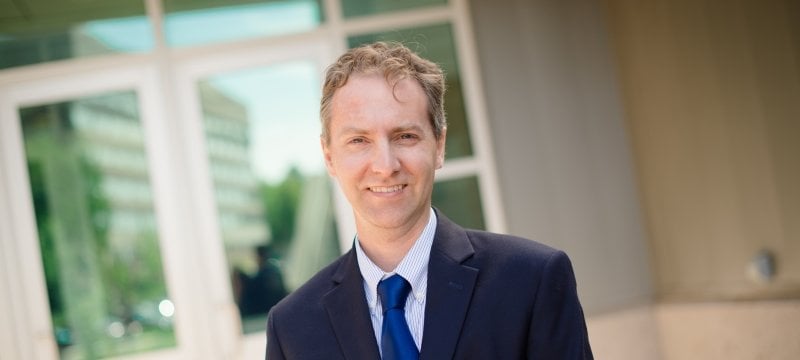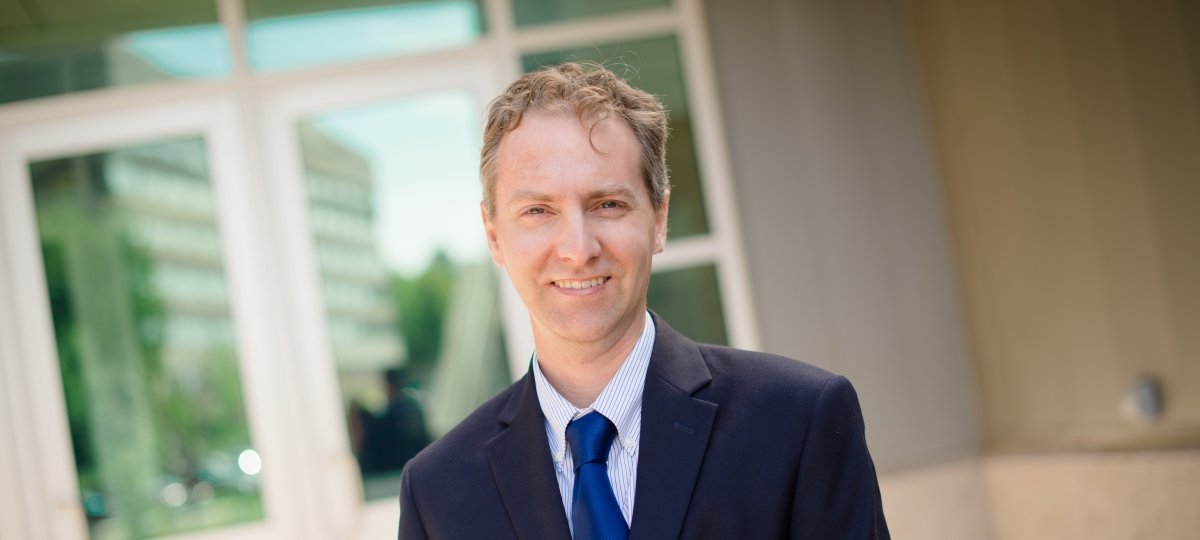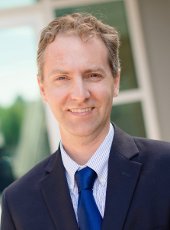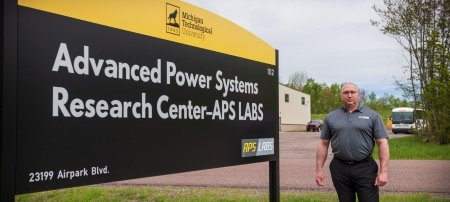The 2021 Michigan Tech Research Award winner develops ultrastrong composite materials for crewed deep space missions.
Composites are much like they sound: materials composed of different substances. Their components can enhance their overall strength, toughness, weight and other properties such as electrical conductivity. For example, deep space exploration demands composites that are both lightweight but incredibly strong.
About the Researcher
That’s why Greg Odegard got into carbon.
Odegard is the John O. Hallquist Endowed Chair in Computational Mechanics in the Department of Mechanical Engineering-Engineering Mechanics at Michigan Technological University. He also leads the NASA Institute for Ultra-Strong Composites by Computational Design (US-COMP) and the Tech Forward initiative for Advanced Materials and Manufacturing. Odegard specifically studies ultrastrong carbon-nanotube-based composites, and he points out that not all carbon is equal. While all sporting a big C chemically, the soft sheets of graphite differ from the rigid strength of diamond and the flexibility and electrical properties of graphene.
In its many forms, carbon can perform in many ways — and the tricky part with composites is figuring out how different materials interact. Computational simulation is modern alchemy and Odegard uses modeling to predict what materials to combine, how much and whether they’ll stand up to the depths of space.
"Dr. Odegard has made a significant impact in the field of composite materials research through his pioneering work using computational modeling techniques that link the influence of molecular structure on bulk properties."
Q: What is the big picture of your research?
GO: Developing new materials for aerospace applications is very expensive and time-consuming. My team uses computational simulation to facilitate this process so we can quickly design, characterize and produce these new materials.
Q: What is the main focus of your work right now?
GO: We are using computational simulation to help develop the next generation of composite materials for crewed missions to deep space. We are working with a large multi-university team on a NASA project to design, develop and test these new materials. This work is all part of the NASA Institute for Ultra-Strong Composites by Computational Design (US-COMP), which received a $15 million dollar grant in 2017.
Q: Where did you get the inspiration for the project?
GO: NASA is shifting some of its research focus from low-Earth orbit to deep space exploration. To enable deep space missions with crews, NASA researchers understand they will need new building materials for vehicles, habitats and power systems that are lighter and stronger than those available today. I am very excited to be able to use my team’s computational simulation expertise to help NASA develop these materials.
Q: How have your methods helped make the project successful?
GO: We have been able to help the material suppliers for these composite materials, mostly resin and carbon nanotube manufacturers, to understand the strengths and weaknesses of their materials. We have also helped them understand how to improve their materials for more optimal performance.
Research Stats
- 104 journal publications
- More than four dozen graduate and doctoral students
- 907 citations on most-cited paper
- More than $21 million in research funding
Q: What do you find most interesting about your work?
GO: Without a doubt, I have the most fun working with my graduate students and the broader US-COMP team. Our whole team is excited about the research and our progress, and this makes for some of the best research meetings I have experienced in my career. As we get closer to our research goals, the team gets increasingly excited and engaged.
Q: Who benefits from the research?
GO: Not only does NASA and the composite material industry benefit from this research, but there is another benefit to US-COMP’s work that I recently observed. With our large team and frequent interaction, I feel we have helped pioneer a new paradigm in large-scale interactions. We have evolved our team, which is scattered across the country from multiple universities and government labs, into a tight-knit group that meets on a daily basis to solve a highly complex problem. I like to think of it as a modern Manhattan Project for composite materials.
"International recognition of Dr. Odegard’s sustained productive research endeavors and pioneering research techniques in computational modeling exemplify the high standard of research achievement here at Michigan Tech."
Q: What are the challenges you faced?
GO: The most important lesson I have learned is that the key to success in large projects is consistent and engaging communication. As the leader of a large project, I have learned that my most important task is to make sure all of the researchers, students and program managers are actively communicating with each other on their progress, roadblocks and needs. Even if it means I have to attend countless meetings to facilitate this conversation, it is a necessary requirement of a leader for a successful project outcome.
Michigan Technological University is an R1 public research university founded in 1885 in Houghton, and is home to nearly 7,500 students from more than 60 countries around the world. Consistently ranked among the best universities in the country for return on investment, Michigan's flagship technological university offers more than 185 undergraduate and graduate degree programs in science and technology, engineering, computing, forestry, business, health professions, humanities, mathematics, social sciences, and the arts. The rural campus is situated just miles from Lake Superior in Michigan's Upper Peninsula, offering year-round opportunities for outdoor adventure.







Comments